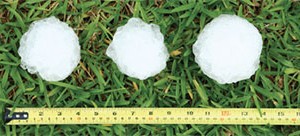William Wilt and Kirk Hartley, the authors of the accompanying article, “Have Insurers Paid Too Much for Asbestos and Other Toxic Torts?” recently published a research note, in a Q&A format, highlighting the potential impacts that forthcoming waves of genomic data could have on toxic tort litigation.
In the excerpts below, Wilt asks Hartley about workers compensation impacts and litigation involving plaintiffs who are smokers.

Wilt: Many of our readers will work for insurers where workers compensation is an important product. In turn, we’re aware that states are increasingly passing legislation where it must be presumed that certain cancers (or other diseases) are the result of occupational exposure (i.e., the burden to prove otherwise falls on the employer). Fire fighters and a variety of cancers come to mind.
Do genomic analyses have a role to play here?
Hartley: Yes, absolutely. For example, some of the cancers at issue in the firefighting foam MDL (e.g., testicular cancers) are often associated with genetic abnormalities. Also, the issues go beyond cancer and include, for example, degenerative diseases such as Parkinson’s. As an example of the latter, fact sheets in use in the paraquat MDL 9 (In re Paraquat Prods. Liab. Lit., 21-MD-3004 (S.D. IL.) call for disclosure of genetic testing data.
Wilt: Shifting the focus to smoking; we all know it’s bad! But it sounds like there is some potential breakthrough data that could link it to myriad diseases. If that’s true, what does it mean for defendants in personal injury cases?

Hartley: You are light years ahead of the pack in asking the question. In short, yes, “signature mutations” for tobacco-induced cancers have been identified and published in top-tier scientific journals by internationally respected researchers. And, recently, researchers have even acknowledged that smoking plays a role in some mesotheliomas.
To date, I’ve seen only a handful of personal injury cases where a party argued the presence of a signature mutation. However, I certainly am encouraging more parties to be aware of and explore the use of signature mutation patterns to prove smoking (or other toxicants) as the cause of a cancer or other disease/condition.
This excerpt is being published by Carrier Management with permission from the authors.





















 U.S. P/C Industry Combined Ratio Headed Back Up to 100: S&P Ratings
U.S. P/C Industry Combined Ratio Headed Back Up to 100: S&P Ratings  Navigating DEI Legally: Emphasizing Equity Without Legal Pitfalls
Navigating DEI Legally: Emphasizing Equity Without Legal Pitfalls  Wildfire Losses Increasing But Still Small Compared to Hurricanes: KCC
Wildfire Losses Increasing But Still Small Compared to Hurricanes: KCC  Lemonade: 700K Customers on the Car Waitlist
Lemonade: 700K Customers on the Car Waitlist 
